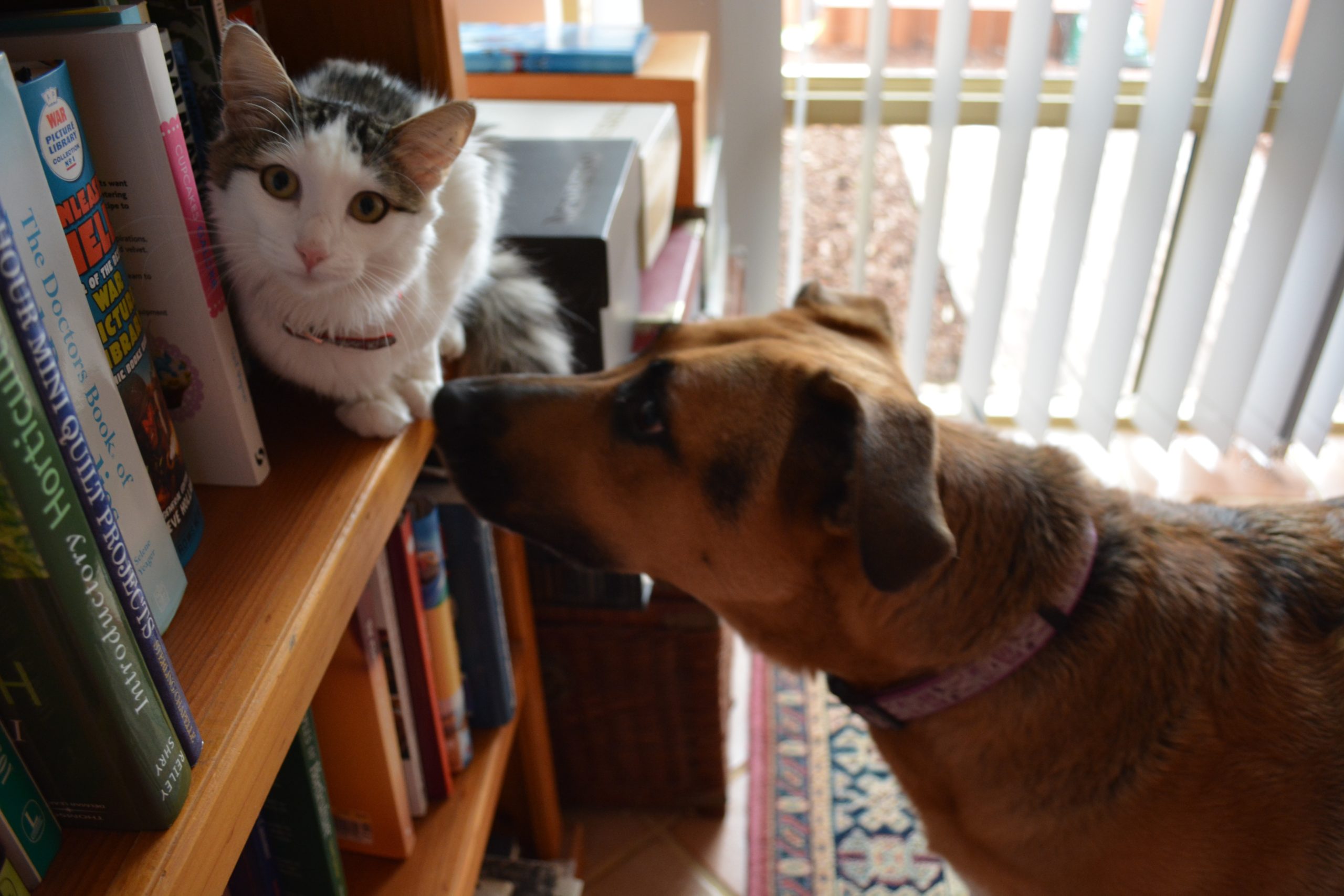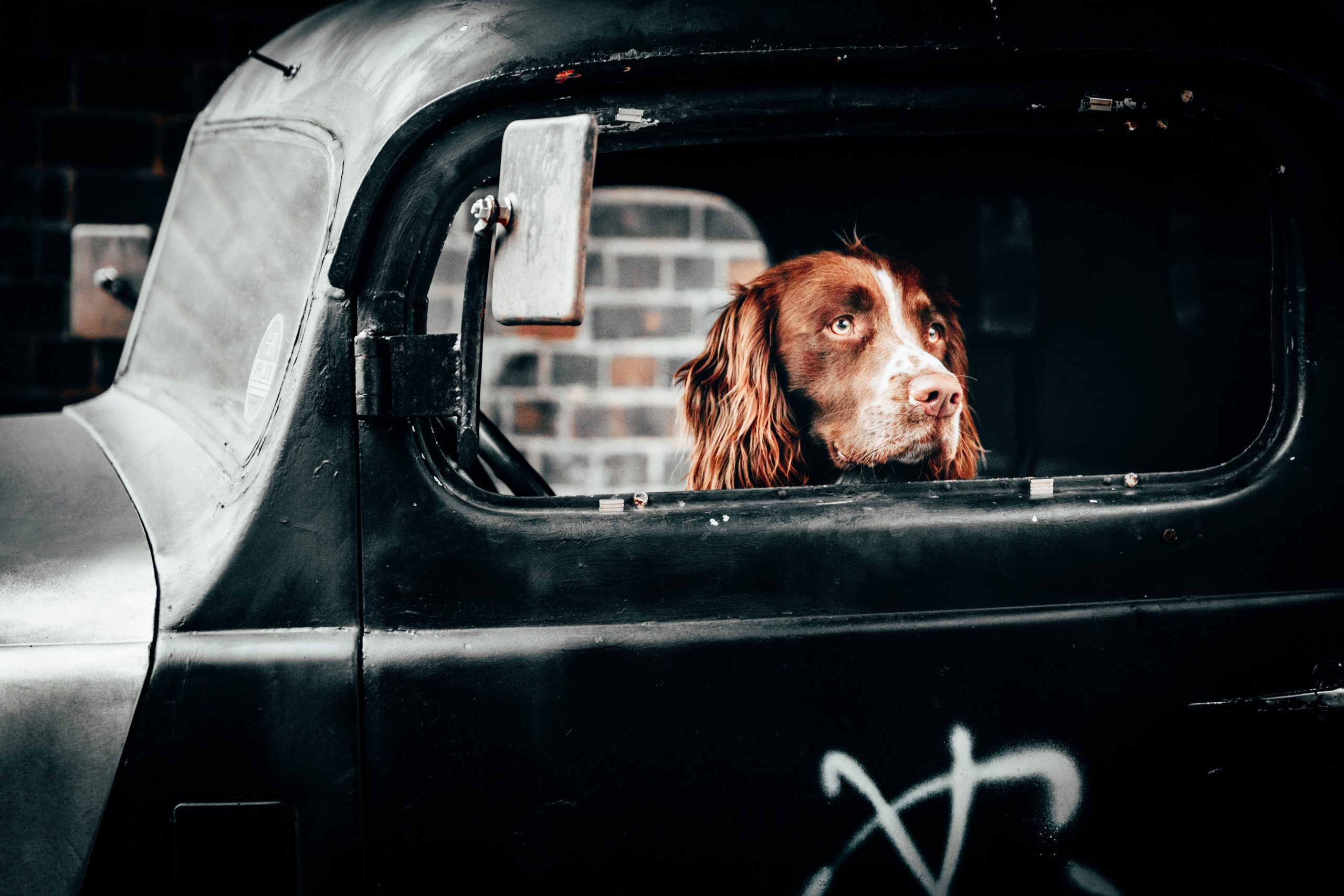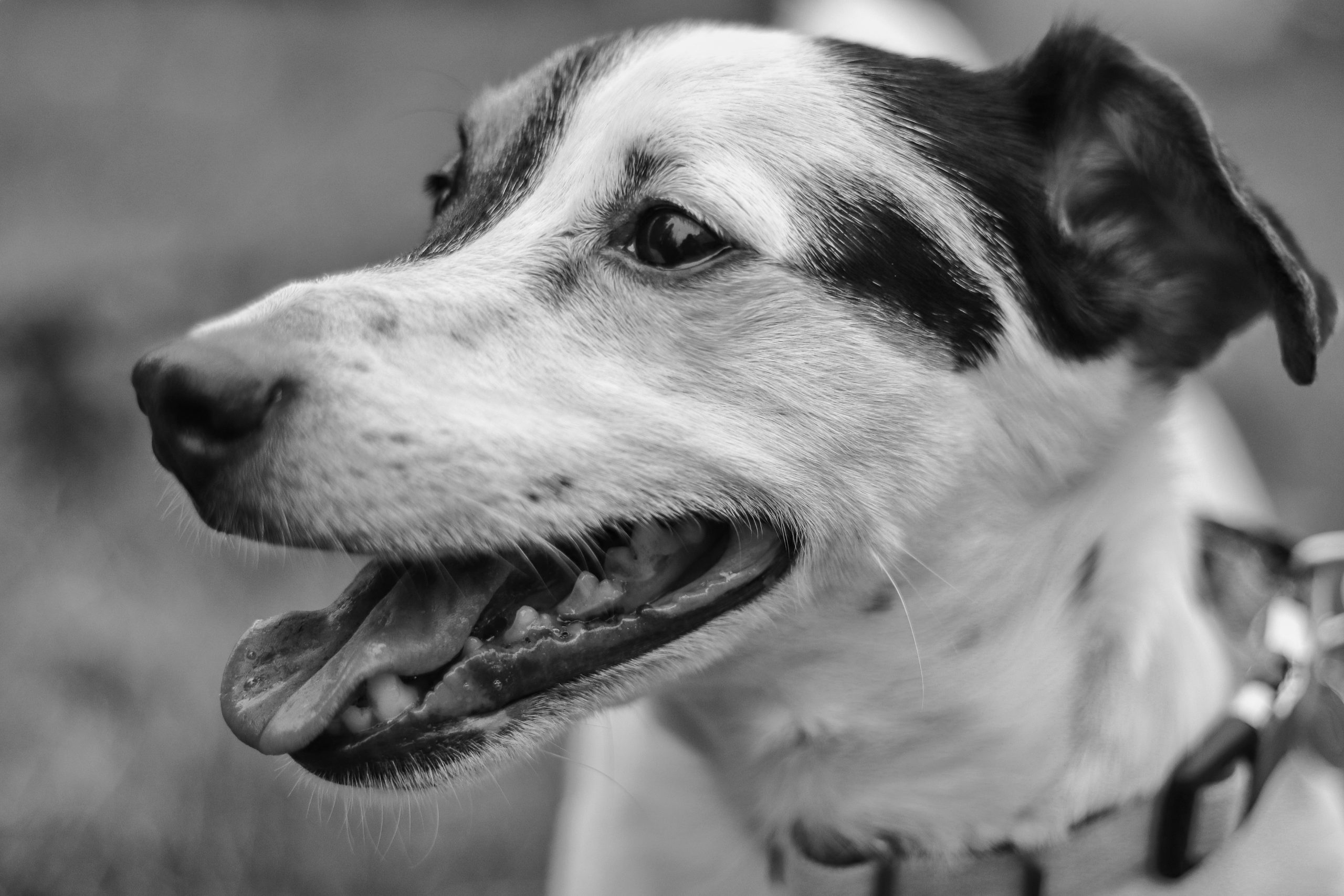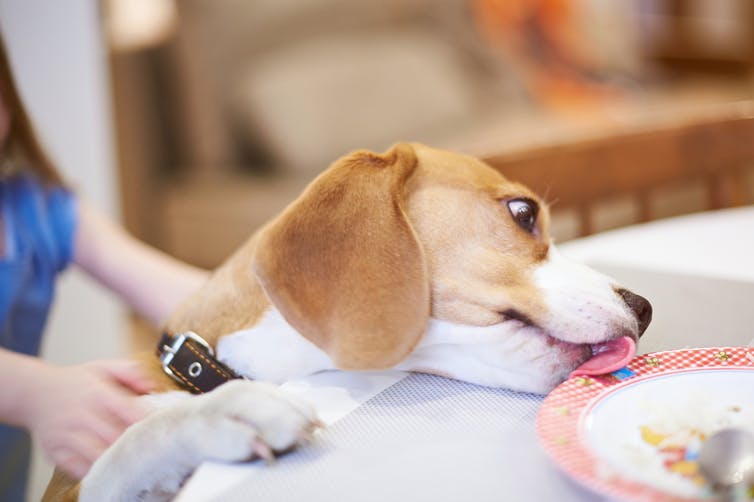Dogs misbehaving in the car can drive you around the bend! Solving travel turmoil with pets means working out ‘what’s wrong’ first. This is not as difficult to cure as you may think.
Why does my dog misbehave in the car?
1. Is Your Dog Fearful?
One group of dogs is fearful of car travel because they have travel sickness. This is caused by continual rocking movement of the vehicle and the rapid passing of outside scenery.
This is similar to travel sickness experienced by people and many dogs thus affected will be nauseous and will vomit. This is not a pleasant experience for man or dog!
For such dogs, chewing often has an anti-vomiting effect. Try giving the dogs a pig’s ear or a Greenie to chew while you are travelling. This will distract the dog, make if happier about car travel and has at least some stomach-settling effect.
A new motion sickness medication is available from your vet. It is non-drowsy and has been shown to work for up for 24 hours, so there is some flexibility in administration.
2. Maybe Your Dog is Over-excited
Perhaps your dog is overexcited by all the commotion that car travel involves.
This is because of:
- The excitement and commotion when preparing to leave
- The joyful prediction of the fun of the destination; and
- The continual flickering movement of the scenery passing at 110km/hr (a very unnatural speed for even the fastest of dogs)
This could be making your dog ecstatic and it may be barking, whining and pacing for the whole car trip.
3. What About Territorial Aggression?
Do you feel your dog is too territorial in the car and is being aggressive?
For some dogs, the car is an extension of their home range. When they see other dogs and or people passing, the dogs become territorial and will bark and growl, often quite ferociously.
While all dogs can become sensitive to car travel, ‘visually-coded’ working dogs, especially Border Collies, Cattle Dogs and Kelpies are most commonly affected.
In addition, any dog of the terrier type is also likely to participate.
Dogs of this type are very reactive to movement. That is why such dogs are useful for herding of cattle or sheep because the movement of the herd stimulates the dogs’ instincts.
When in a car, they cannot fail to become over-stimulated by the continual movement of objects that flick by quicker than a supercharged sheep!
Treating travel fear
Treating car stress can be very tricky if for no other reason that when in the car, your duty is to drive safely.
You can’t do this if you are also trying to make your dog sit, stay and shut up at the same time. Nevertheless, the following processes should resolve the problem.
1. Obscuring Vision
Firstly, because most of the stimulation for your dog’s misbehaviour is the visual overload it experiences, try obscuring its vision outside the vehicle.
For small to medium-sized dogs, this is most safely achieved by having the dog in a transport cage or crate with semi-solid sides – the type you would commonly use to take your pooch to the vet. Such cages are readily available from pet shops. With the dog in the cage, it cannot see through the windows.
Transporting your dog in a transport cage is actually part of an effective process called the Denning Principle.
You an also condition your dog to love the Den when it is at home so that it is more likely to enjoy the car when travelling inside the Den on the back seat. This also works well for many cats.
For big dogs, try tethering them with a harness as low as possible in the car. Attach this to the centre of the back seat or to the middle of the back of the station wagon so they cannot get to the windows.
A behaviour management aid known as the ThunderCap or ThunderShirt Calming Cap is available from your veterinarian and may be helpful. It fixes to the dog’s collar and partly obscures their vision.
2. Train the Terror
You can also try to modify your dog’s behaviour by progressively desensitising it to car travel. The goal is to create calm behaviour away from the car:
- Reward your dog for calm behaviour when it is in the stationary car with the doors open,
- and then with the door closed
- then try a short trip
- and gradually increase the length of the trips as your pooch learns to remain calm.
For this purpose, you need to develop a command/reward routine. There are several options but one is to train your dog to lie peacefully on a ‘happy mat’ and combine this with the Circle of Commands.
Try these steps:
- Place a dog-sized mat in your lounge-room and scent it with your own perfume or deodorant so that the smell of the mat is familiar and friendly. Every time you use the mat, the scent will help to calm the dog.
- Command your dog to GO TO BED and then to STAY on the scented mat for ten seconds. If he or she does so, reward it with a food treat and praise it enthusiastically .
- Then command COME to remove it from the mat.
- Do this circle of three commands (GO TO BED – STAY – COME) fifteen times morning and evening so your pooch learns the new routine.
As your dog responds, increase the time of the STAY from ten to fifteen to twenty seconds and so on. Then, once the message has been learnt:
- Move the scented mat to the car
- Place the mat on the back seat and follow the same routine with all the car doors open.
- If your pooch retains his or her calm demeanour, then close the doors, repeating the circle of commands many times to reward this calm behaviour.
In this manner, you are continually rehearsing the behaviour you want your dog to show when you are driving in the car, and your dog is enjoying it.
Eventually try a test drive on a quiet road or even in a nearby car park that you can walk to, where it is safe to stop and start.
If your pooch starts to get restless, immediately stop the car and command GO TO BED.
Wait for the calm behaviour to return, reward this behaviour, and continue with your therapeutic car trip.
Sure such processes are time consuming, but for many madly manic motorcar mutts this is the only way of getting them to over their travel terror!
Will pheromones help?
The ADAPTIL range of collars which are soaked in Dog Appeasing Pheromone (DAP) has proven effective. An ADAPTIL spray is also available specifically for travel and transport use.
Medication for manic mutts
For some dogs, medication is the only practical way of managing the problem. While some dogs may only require medication for the nausea, others may need quick-acting anti-anxiety medications.
For more details, please contact your veterinarian. Not all medications are suitable for car travel.





